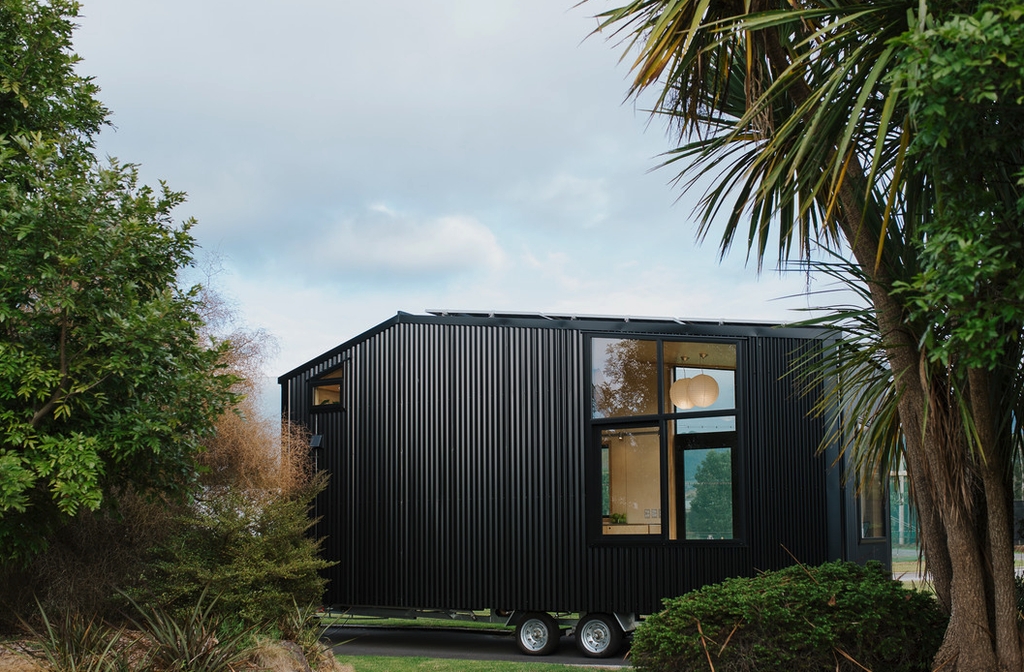How to Take a Mobile Home off the Grid
Although mobile homes offer a fairly straightforward route out of the grid (compared to other options), they still require a fair amount of attention and build upon a successful move.
Install the power
To operate the mobile home, one has several options.
First of all, there is solar energy that is harnessed and stored in solar panels. Solar panels are exposed to the sun, absorbing sunlight through photovoltaic cells. Then they generate a direct current that is directed into the house as alternating current and used in appliances.
Another option is wind power, especially for homeowners on a large area of land. Residential wind energy can be harnessed by large turbines between 80 and 150 feet in height. The tall spiers catch the wind even above windbreakers like trees. The wind rotates the fans on the turbine, causing the connected rotor to rotate the generator and produce power. For this option to work, make sure the area experiences winds of at least nine miles per hour.
Looking for water
For believers living in the OTG who wish to be completely separated from government utilities, finding a water source is critical to the sustainability of their lifestyle. One can use rainwater during the rainy season and build or purchase storage facilities to store large quantities of water for later use. Another option that may be more sustainable regardless of the season is to drill a well, but you need to own the land to go that route.
To draw water from the well, the householder can use a hand pump or solar/wind powered pumps.
Isolate here
There are some types of insulation that you can expect from a mobile home manufacturer. In some cases, when the homeowner knows exactly the weather conditions in which they will live, they can order the insulation in advance and have it installed by the manufacturer.
On the other hand, you may want to do it yourself. The advantage of having the insulation done by a professional is that the homeowner is comfortable with a professional job so that they can save energy. DIY insulation projects can succeed, but in the most cases, they fall short in some areas.
However, here are the critical areas to focus attention on during DIY insulation:
The roof
The best insulation for the ceiling is a warm ceiling. This is where one installs the insulation between the rafters to keep the timbers warm.
Alternatively, one can use Icynene, a spray shaped insulator that expands to 100 times its initial volume when sprayed to cover small areas in the ceiling. Icynene has an open cell structure which makes it breathable. Allows the house to the breathe naturally while preventing internal condensation. This is a great eco-friendly solution.
1. Walls
There are many environmentally friendly options for wall insulation, including sheep’s wool, which is popular due to its water-repellent quality. Sheep’s wool is excellent because it is organic and also keeps the house warm in the winter and cool during the summer months. The wool fibers are compressed and form tiny air pockets that make them breathable, so there is no condensation.
Icynene can be used on walls as well. Polystyrene is a plastic used as aerosol foam or rigid foam board. Polystyrene provides exceptional insulation making the mobile home energy efficient. As a result, the homeowner spends less energy, even if it is the solar energy.
For the OTG enthusiast who wants a negative carbon print, the best insulating material is Thermacork. This material is made from the outer bark of oak trees, so it is not only recyclable, but also biodegradable. Moreover, it cancels out any noise.
2. Doors and Windows
Windows and doors can be insulated with film insulation, spray foam and thermal curtains.
Weather strips help seal doors and windows, keeping air current. One can also apply rigid foam insulation to affect windows.
3. Water ducts and openings
Conventional pipe wrap insulation works well to protect the home’s pipes from damage due to cold weather. There are a variety of materials to choose from for the casing, including natural cotton backed with aluminum foil, foam and foil, bubble film, or rubber tubing insulation tape, among others.
The main reason to insulate a home’s ductwork is to prevent energy loss through ducts or vents. Also, the insulation prevents the buildup of condensation and temperature drops.
4. Sewage disposal plan
Wastewater is a crude subject (pun intended), but it’s relatively easy to handle on your own.
A septic tank can be a large metal tank buried deep in the ground but attached to the toilet. A septic tank releases sewage into a discharge field, so one does not see the process of sewage disposal. Once a year, you will need to contact a professional sewage disposal company to empty it and clean it
Others prefer to use a compost toilet also known in some places as a pit toilet. Composting toilets are freestanding and can operate for years because they decompose naturally.
5. Waste disposal plan
The best thing about living off the grid is that it drastically reduces the amount of waste produced, and most waste is plastic-free. The plastic does not decompose, but the rest of the litter can be managed into the compost pit to produce an organic garden compost. The rest can be burned.
To make waste disposal manageable, recycling should be the daily arrangement. Do not dispose of plastic containers. Instead, use it to pack groceries when shopping for supplies.
Food is the second most wasted item in the home – so make sure all your leftovers get into the compost pit.
Source: Mobile Home off the Grid


